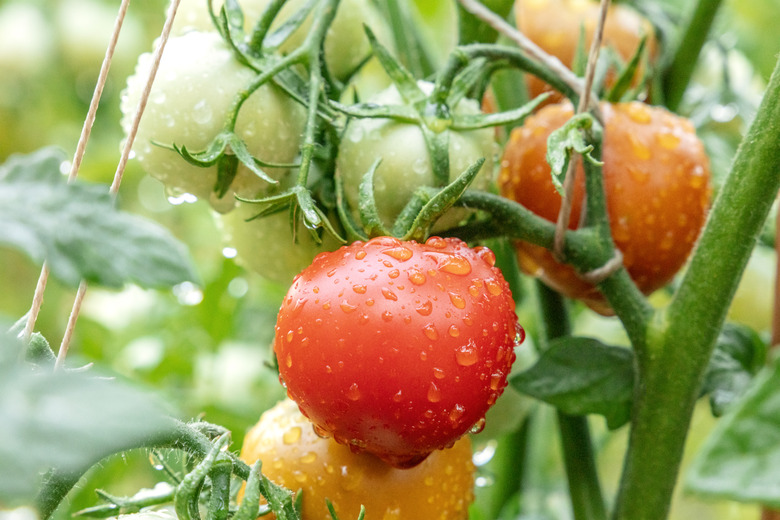Why Do Tomatoes Wilt After A Heavy Rain?
We may receive a commission on purchases made from links.
Gardeners may wonder if they can ever get it right. Tomato plants are the most popular crop in the home garden thanks to the vastly superior taste of garden-grown to commercially grown fruits. While relatively easy to grow, tomatoes react poorly with too little water and also with too much water. The latter situation usually occurs during heavy rain.
Meet the Tomato Plant
Meet the Tomato Plant
Most people putting in a vegetable garden put tomatoes (Lycopericon esculentum) on the short list. Tomatoes aren't difficult to grow. One plant can produce many fruits, and all of them taste so much better than commercial tomatoes that gardeners get addicted.
Tomato plants are divided into two groups: determinate and indeterminate. Determinant tomatoes grow to a given height and then stop and produce fruit within a month or so. They are also called bush tomatoes and usually need a cage for staking.
Indeterminate varieties keep growing and producing tomatoes all season long. They are also called vining tomatoes, and they can grow 10 or 15 feet tall, requiring extra-tall supports. Regular cages are too short.
How to Grow a Tomato Plant
How to Grow a Tomato Plant
Tomatoes are fairly easy to grow, but like every other crop, these plants have particular cultural care needs that must be met to keep them healthy and productive. These include sunshine, well-drained soil, potassium, and water.
To say they need sunshine is actually an understatement. Tomatoes cannot thrive without plenty of sun. Ideally, a tomato plant belongs in a full-sun location where it gets 10 hours of light each day. This will allow the plant to flower and fruit. They also need well-drained soil and potassium, which is best supplied by fertilizer during flowering.
Finally, tomatoes require ample water. A tomato plant needs about 1 inch of water a week. If the plant doesn't get enough water, the foliage will wilt. This type of wilt is easy to resolve by watering the plant as soon as you notice it. On the other hand, if the tomato plant is getting too much water, usually during and after a rainstorm, it will also wilt. This is harder to resolve.
Prevent Tomato Plants From Wilting
Prevent Tomato Plants From Wilting
Tomato plants live their best life in hot-summer climates with weekly watering and fertilization. However, when a lot of rain hits the soil in a short time, the roots get waterlogged and suffocate since they cannot "breathe." This situation can cause root rot and/or bacterial wilt if allowed to continue.
This type of destructive wilting is easier to prevent than cure. First, make excellent drainage for your tomatoes a top priority. Tilling the soil before planting and working in an amendment, like peat moss, creates better drainage. Growing them in raised beds is another good way to improve drainage.
Second, stop all irrigation after a heavy rainfall. This just makes sense. There is no reason to add more water into the mix. During a rainstorm, it is also possible to dig ditches to drain water away from the plants.
